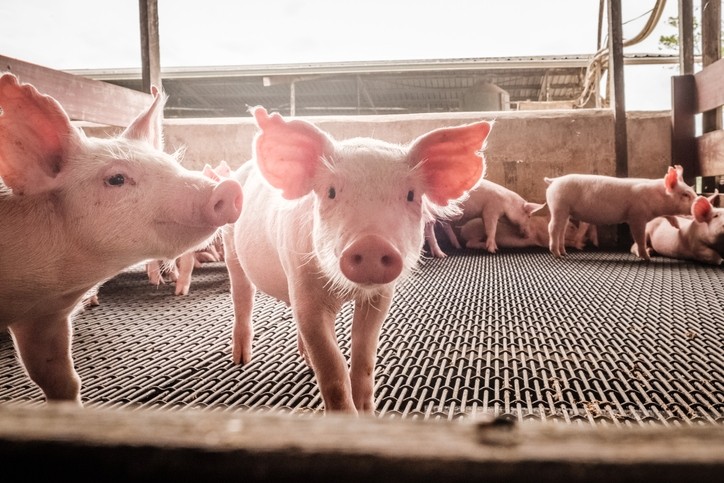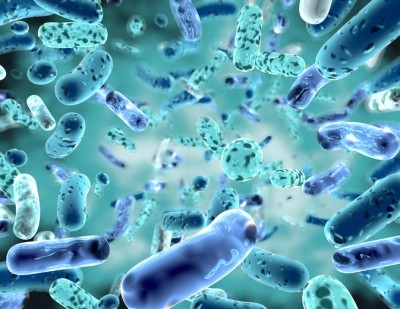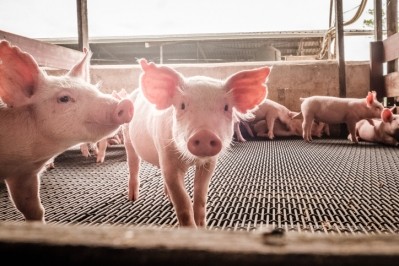Citrus pulp boosts piglet fecal consistency, gut health

An international team of researchers explored the influence of varying levels of crude protein (CP) and dried citrus pulp (DCP) on fecal consistency and intestinal bacteria in weaned pigs. The study was published in the journal Livestock Science.
“This study was conducted to evaluate the synergistic effects of dietary CP and DCP contents on fecal consistency scores and bacterial cell counts in the hindgut of weanling pigs,” the researchers said.
The researchers found that there were no interactions between crude protein and DCP for fecal consistency. However, adding 7.5% DCP reduced instances of soft fecal material.
On day 7, postweaning, lowering the amount of dietary CP reduced the “ileal and colonic coliform population” in pigs also receiving DCP, they said. And, adding the citrus pulp to diets lowered cecal coliform counts for pigs on the low-CP diet on day 7.
However, on day 28 postweaning no changes in coliform population in the ileum, cecum or colon were found, they said. Lactobacilli counts in the ileum, cecum or colon were similar on days 7 and 28.
“The inclusion of 7.5% DCP in the diet of pigs, regardless of CP content, improved fecal consistency scores during the challenging postweaning period,” the researchers said. “This study also highlighted the importance of considering feeding low-CP AA-supplemented diets enriched with 7.5% DCP as a nutritional management strategy to manipulate the piglet gut microbiota by diminishing counts of coliform bacteria in the hindgut over the short weaning transition period.”
Improving weaned piglet diets
Switching piglets from a milk-based diet to a grain-based feed at weaning is a shift that shapes the “diversity and composition” of the pig’s microbiome in the gut, the researchers said.
High-protein diets tend to increase proteolytic fermentation in the hindgut, which can generate an “overgrowth of potentially disease-causing pathogenic bacteria,” they said. The situation also generates toxic metabolites including ammonia, phenols, indoles and biogenic amines.
“Hence, weaning transition is associated with a disrupted state of the pig gut microbiota, or so-called dysbiosis, which emerges as a leading cause of postweaning diarrhea,” they added.
Why explore dried citrus pulp use?
However, high-quality postweaning diets can have expensive ingredients, the researchers said. Using agro-industrial by-products like fruit waste may be a cheaper alternative.
Dried citrus pulp (DCP) is a by-product generated by the citrus-processing industry that provides high levels of “readily fermentable carbohydrates,” they said. Previous research linked the inclusion of DCP in low-protein diets as a way to alter the fermentation pattern in the hindgut of nursery pigs.
“However, there are still no published studies evaluating how DCP inclusion in starter diets interacts with dietary CP content for modulation of piglet gut microbiota,” they said. “We hypothesized that DCP inclusion in low-CP AA-supplemented diets would minimize harmful bacterial proliferation in the hindgut and affect fecal scores (i.e. reduce diarrhea incidence), thus reducing the occurrence of enteric disorders associated with gut dysbiosis in postweaning pigs.”
Feeding trial details
During the feeding trial, 108 early-weaned pigs received one of four diets for a 28-day period, the researchers said.
The diets included a high level of crude protein (high-CP) at 20 and 21% CP, with either 0 or 7.5% dried citrus pulp (DCP) or a reduced amount of protein (low-CP) at 16 or 17% CP with 0 or 7.5% DCP, they said. Protein levels were altered on day 15 and crystalline amino acids were used to provide an ideal AA level.
“Pigs were fed corn-soybean meal-based diets at varying CP contents, but with equal amounts of standardized ileal digestible (SID) Lys [lysine], Met [methionine], Thr [threonine], Trp [tryptophan], Val [valine], and Ile [isoleucine],” they said. Diets did not include antibiotics or growth promoters.
Pig feces were scored during the first seven days postweaning, they said.
A selection of pigs was harvested on days 7 and 28 to collect samples of digesta from the ileum, cecum and colon to establish total coliform and lactobacilli counts, the researchers said.
Results
Overall, feeding low-CP diets with 7.5% DCP to weaning pigs lowered the hindgut fermentation while maintaining growth performance and gut morphology, the researchers said. However, there were no significant interactions between crude protein or DCP level and sampling day.
None of the pigs in the study developed diarrhea, they said. An interaction between CP and DCP inclusion during the first seven days post-weaning was not found and fecal consistency was not influenced by dietary CP level.
“However, feeding diets containing 7.5% DCP led to a decrease in fecal consistency scores on days 1 and 3, as well as to a tendency towards decreased fecal consistency scores on days 2 and 5 in comparison with 0% DCP diets,” they said.
There was an interaction between CP and DCP use for coliform counts in the distal ileum and there tended to be one in the proximal colon on day 7, the researchers said.
Changing the amount of protein did not alter the number of total coliforms colonies, they said. But, when DCP was added to the feed, pigs on the low-CP diet saw lower numbers of coliform populations compared to pigs on a high-CP diet.
“There was a CP x DCP interaction for coliform counts in the cecum on day 7, in which feeding diets containing 7.5% added DCP decreased the number of total coliforms for pigs fed the low-CP diet, but not for those fed the high-CP diet, suggesting the best use of the DCP is with low-CP diets,” they added.
The number of coliforms in the distal ileum was not altered by diet on day 28, they said. Total counts of cecal and proximal colonic coliforms were “virtually insignificant” on day 28.
“No differences among dietary CP or DCP contents of inclusion were observed for lactobacilli counts in the ileum, cecum, or colon of pigs on both 7 and 28 days postweaning,” the researchers said.
However, the difference in bacterial populations based on sampling day – day 7 postweaning compared to day 28 – indicates that bacterial communities may shift in an “age-dependent manner,” they said.
Source: Livestock Science
Title: Fecal characteristics and gut bacterial population of weaned pigs fed amino acid-supplemented diets varying in crude protein and fermentable carbohydrate contents
Authors: V.V. Almeida, A.J.C. Nuñez, A.P. Schinckel, P.V.A. Alvarenga, F.R. Castelini, Y.V. Silva-Guillen, M.C. Thomaz
DOI: doi.org/10.1016/j.livsci.2019.103881















